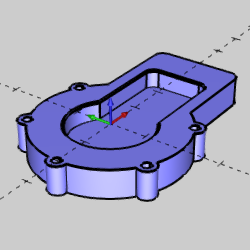
This topic explains how to create the CAD model for the Mill Express demonstration file. The design process includes using the Shape Library, 2D Boolean, and other wireframe functions to create the profile, pocket, and holes for the model. The wireframe is then extruded to create a boss, and the pocket and holes are removed from the boss using extruded cuts.

This tutorial highlights the following features of the BobCAD-CAM software:
Using the Shape Library
Utilizing entity colors and CAD layers to aid in geometry selection
Creating Hole Patterns
Creating and managing CAD layers
Deleting geometry
Using 2D Boolean to add wireframe chains
Using Quick Trim
Using Extrude Curve
Using the Snap Increment to eliminate data entry changes
Using Extrude Cut
Creating chamfers with Solid Chamfer
Using Tangent Propagation to your advantage
A template file is provided so that you can have the same system colors as shown in this tutorial. We start by opening the template file and renaming it to keep the original file unchanged. It is good practice to always begin a file by saving it with an appropriate name and location and then saving often.
We use the Shape Library to quickly create wireframe geometry that is modified later.
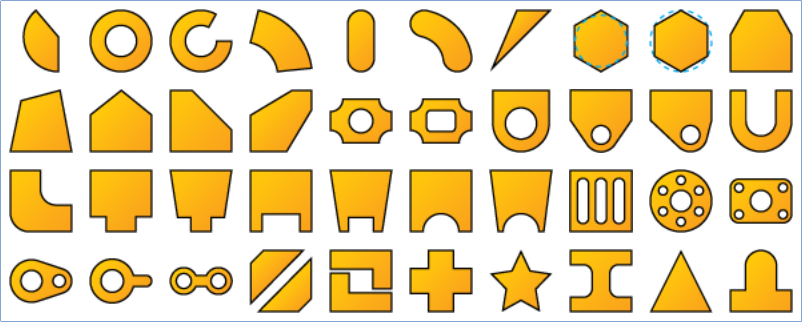
Note: Notice that the CAD preview of the shape updates as you define the Data Entry parameters. The CAD preview allows you to confirm the desired result before creating the shape.
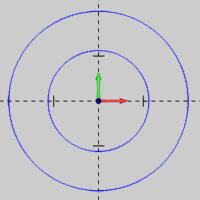
Next we create a layer and assign a color to it. This assists in geometry selection later in the tutorial.
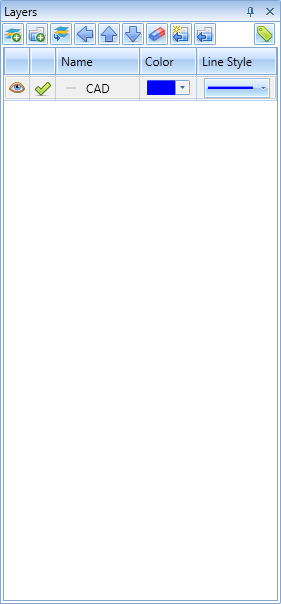
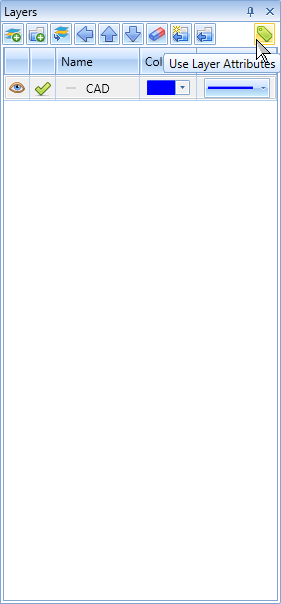
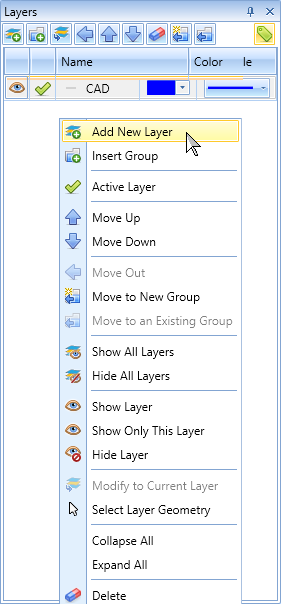
Tip: With Use Layer Attributes selected, the color and line style set for an individual layer will automatically be set as the active attributes when that layer is active.
Now we use a hole pattern to easily create a circular pattern of holes.
In the Pattern group of the Create 2D ribbon, click Hole Pattern.
Update the Data Entry parameters:
Diameter = 4.000
Number of Holes = 6
Hole Diameter = 0.500
Select the check box for Break Arc
Click OK to create the hole pattern.
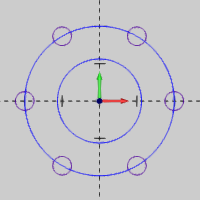
Before creating another hole pattern, we change back to our original layer.
In the Active Layer column, click the CAD row to set that as the active layer.
The active color automatically updates to match that of the CAD layer.
Tip: New layers are created with attributes matching that of the active layer. By quickly switching to this layer prior to making another layer, we save ourselves the time of having to change the active color after creating the layer.
Using CAD layers is a great way to keep your drawings organized. This helps with geometry selection and provides a convenient way to hide and show geometry.
In the quick access toolbar of the Layers Manager, click the ![]() New Layer button.
New Layer button. 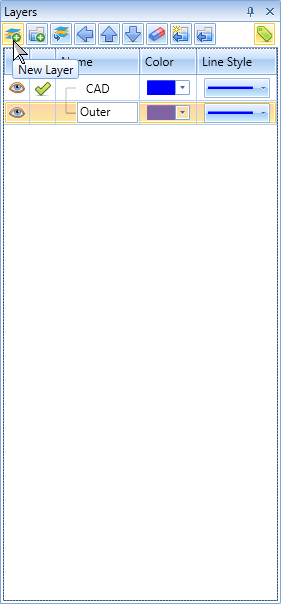
A new layer is created with the name, Layer-2, highlighted to allow for edits, and is set to the active layer automatically.
To name the layer, type Holes.
The name is automatically updated once focus is placed on another area, or function.
Now we create the second hole pattern, which is later used to extrude cut holes into the model.
Important: Generally, when you modify the Data Entry settings for a CAD function, such as Hole Pattern, they are retained until you change them again or close the file or software. After closing a file and/or the software, the Data Entry settings return to their default values. In this example, we only instruct you to change values as needed, based on this understanding. So, when defining the Hole Pattern explained next, all settings should be the same as the previous Hole Pattern, and you should only update the values as explained. (For example, Break is still selected from the previous pattern.)
Change the Hole Diameter to 0.250, and press Tab to update the CAD preview.
Click OK.
Click Cancel.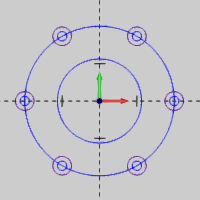
This part shows you how to delete existing wireframe geometry.
In the document toolbar, click  Select Mode to enter selection mode.
Select Mode to enter selection mode.
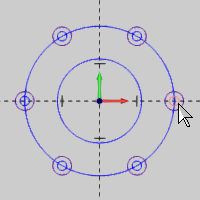
Press the Delete key. (Alternatively, in the Home ribbon, click ![]() Delete).
Delete).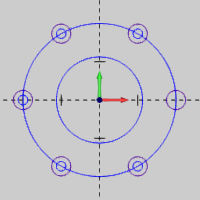
We only want the second hole pattern on the Holes layer, so now we set the CAD layer as active.
In the Layers Manager, click in the Active Layer column of the CAD row to make this the active layer.
Notice the check mark (![]() ) indicates the active layer.
) indicates the active layer.
Next we boolean two closed wireframe chains to begin defining the outside profile for the model.
In the Boolean group, of the Create 2D ribbon, click ![]() 2D Boolean.
2D Boolean.
Notice that Add is selected in the Data Entry Manager, and the First Geometry Group list has focus.
Click to select the largest circle as the first closed chain.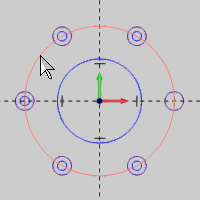
The geometry is added to the First Geometry Group list.
Click in the Second Geometry Group list to give it focus.
 Pick By Layer, and click
Pick By Layer, and click  Pick By Color.
Pick By Color.Click the purple color.
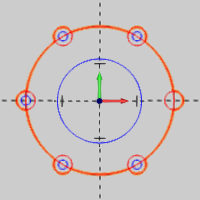
Click OK.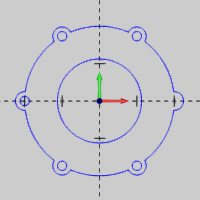
Click Cancel.
The next steps involve creating two rectangles that are used to complete the outer profile and the pocket.
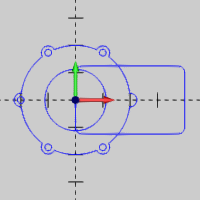
Click OK to create the second rectangle.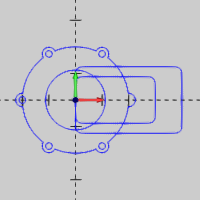
Click Cancel.
We use 2D Boolean again to finish creating the outer profile.
In the Boolean group, of the Create 2D ribbon, click ![]() 2D Boolean.
2D Boolean.
The 2D Boolean dialog launches in the Data Entry Manager with the Add Type selected.
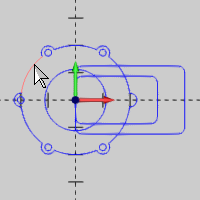
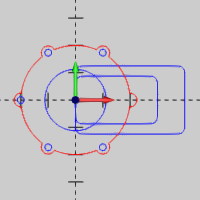
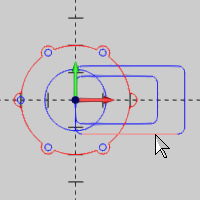
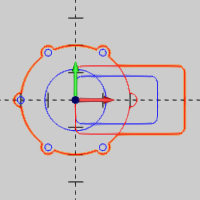
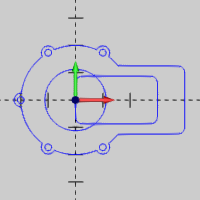
Now we take a moment to use the wireframe trimming tool, Quick Trim. Quick Trim is one of the many useful trimming tools in BobCAD-CAM, and it allows you to delete whole entities or trim them to the intersection of other entities.
In the Trim Extend group, of the Utilities ribbon, click ![]() Quick Trim.
Quick Trim.
Click all of the entities that are inside of the circle and rectangle, in the center of the part, until you have created a single profile for the pocket. (There are seven total selections.)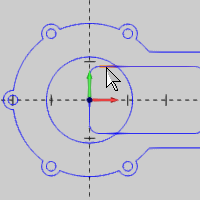
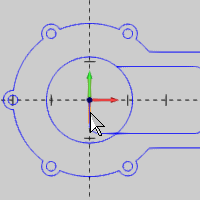
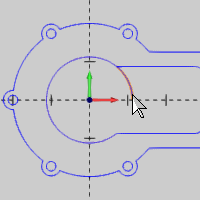
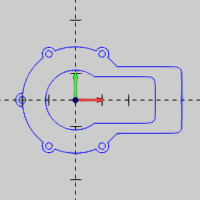
Click Cancel.
Save the file.
In this part, we create a layer place our solid model on. One method of utilizing layers is to create them as needed for certain entities, or groups of entities, to organize your drawings.
Right-click in the Layers Manager, and click Add New Layer.
The layer is created as the active layer, with the name highlighted to allow for edits.
Type Solids to name the layer.
We now extrude our wireframe profile to create the main body of our solid model.
Press Ctrl+7 to select the ISO2 view. (Alternatively, in the Document Toolbar, click the ![]() icon.)
icon.)
In the Extrude group of the Create 3D ribbon, click ![]() Extrude Curve.
Extrude Curve.
Chain select the outer profile.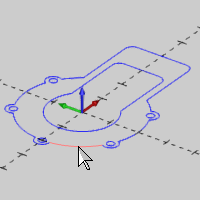
The Preview updates. 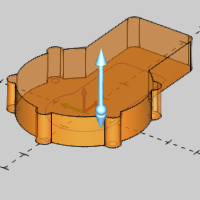
Click the upper (positive) sketch handle to activate sketching.
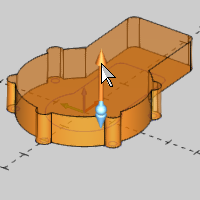
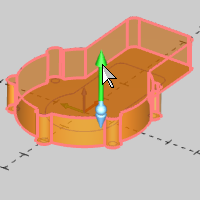
Move the sketch handle down past the selected geometry and into the negative (other) direction.
Tip: In this step, we are dragging the extrusion preview from the positive direction down into the negative (other) direction. When you reach the geometry, the positive distance becomes zero, and BobCAD-CAM automatically switches from the positive sketch handle to the negative sketch handle to allow you to easily change the extrusion direction.
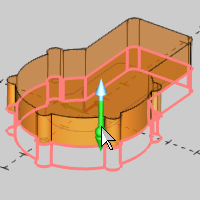
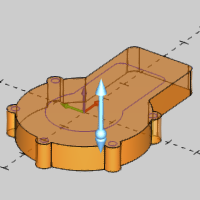
Notice that the Data Entry parameters automatically update while moving the sketch handles. Now we utilize the snap increment to get the exact value without the need for data entry.
The solid is created in the graphics area, and an ![]() Extrude Curve feature is added to the
Extrude Curve feature is added to the ![]() CAD Tree.
CAD Tree.
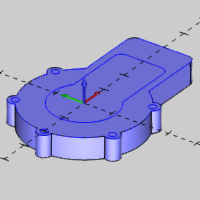
The next steps show how to use Extrude Cut to cut the pocket and holes into the model.
Click in the graphics area to give it focus, and press S to turn off the shaded view.
Tip: The Shaded and Transparent view options can be utilized to aid in the selection of surface edges, or as in this example, wireframe that is on a surface. You can press S or T to toggle these view options.
Select the wireframe profile of the pocket.
The Preview updates automatically.
Press S to turn on the shaded view.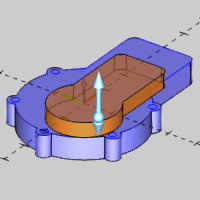
Leave the Scope setting to All Bodies and click OK.
The solid is updated, and an  Extrude Cut feature is added to the
Extrude Cut feature is added to the ![]() CAD Tree.
CAD Tree.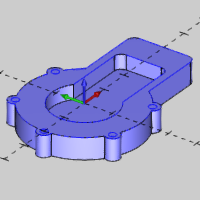
Note: The  Extrude Cut dialog is left open for the following step.
Extrude Cut dialog is left open for the following step.
In the Quick Selection group of the Home ribbon, click the down arrow for Pick By Layer, and select  Pick By Layer.
Pick By Layer.
The Select Layer dialog appears, allowing you to choose which layers entities you would like to select.
Select Holes, and click OK.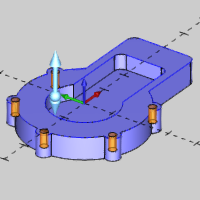
The CAD preview is updated automatically.
Use the lower sketch handle to extend the extrude completely through the part.
Tip: When creating through holes with Extrude Cut, it is generally not important that the Distance values are exact. You can either type the exact value, or use sketch handles to extrude up to, or past, the surface you are cutting.
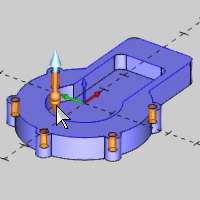
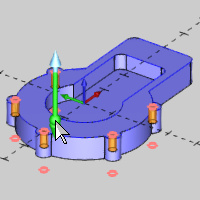
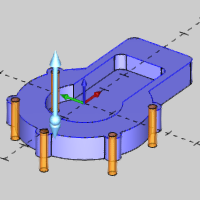
Click OK.
The solid is updated, and an  Extrude Cut feature is added to the
Extrude Cut feature is added to the ![]() CAD Tree.
CAD Tree.
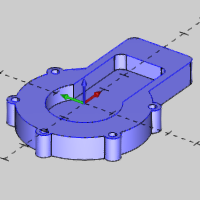
The final step of creating our model is to apply a small chamfer to the internal pocket edge using solid fillet.
We hide the layers that contain our wireframe geometry as it isn't needed anymore, and because we need to select the surface edges of the pocket (not the wireframe used to create it).
When creating solid fillets or chamfers, you can reduce the number of selections needed by using Tangent Propagation. Tangent Propagation automatically applies (propagates) the fillet to any edges that are tangent to your selections. In this part, we show that you only need to select two of the six edges to apply a chamfer around the entire pocket.
In the Corner group of the Create 3D ribbon, click  Solid Chamfer.
Solid Chamfer.
Change the Chamfer value to 0.050.
Notice that Tangent Propagation is selected by default.
Click to select the circular edge at the top of the model.
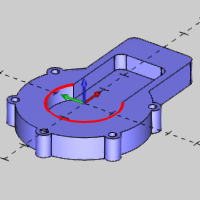
Tip: The circular edge is selected because it forms sharp corners with the edges on either side of it. Any other edge can be selected next, and Tangent Propagation automatically applies the chamfer to the entire pocket. (If the sharp corners were made with a small radius instead, only one edge would need to be selected.)
Select any other surface edge at the top of the pocket.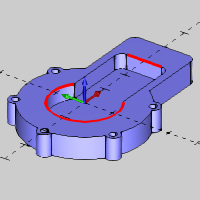
Click OK.
The solid is updated, and a  Solid Fillet feature is added to the
Solid Fillet feature is added to the ![]() CAD Tree.
CAD Tree.
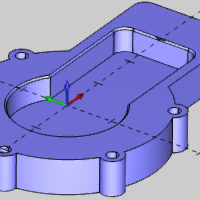
Click Cancel.
Save the file.
Congratulations! You have finished the Mill Express CAD model.
To learn how to machine the model, view the Mill Express CAM Tutorial.